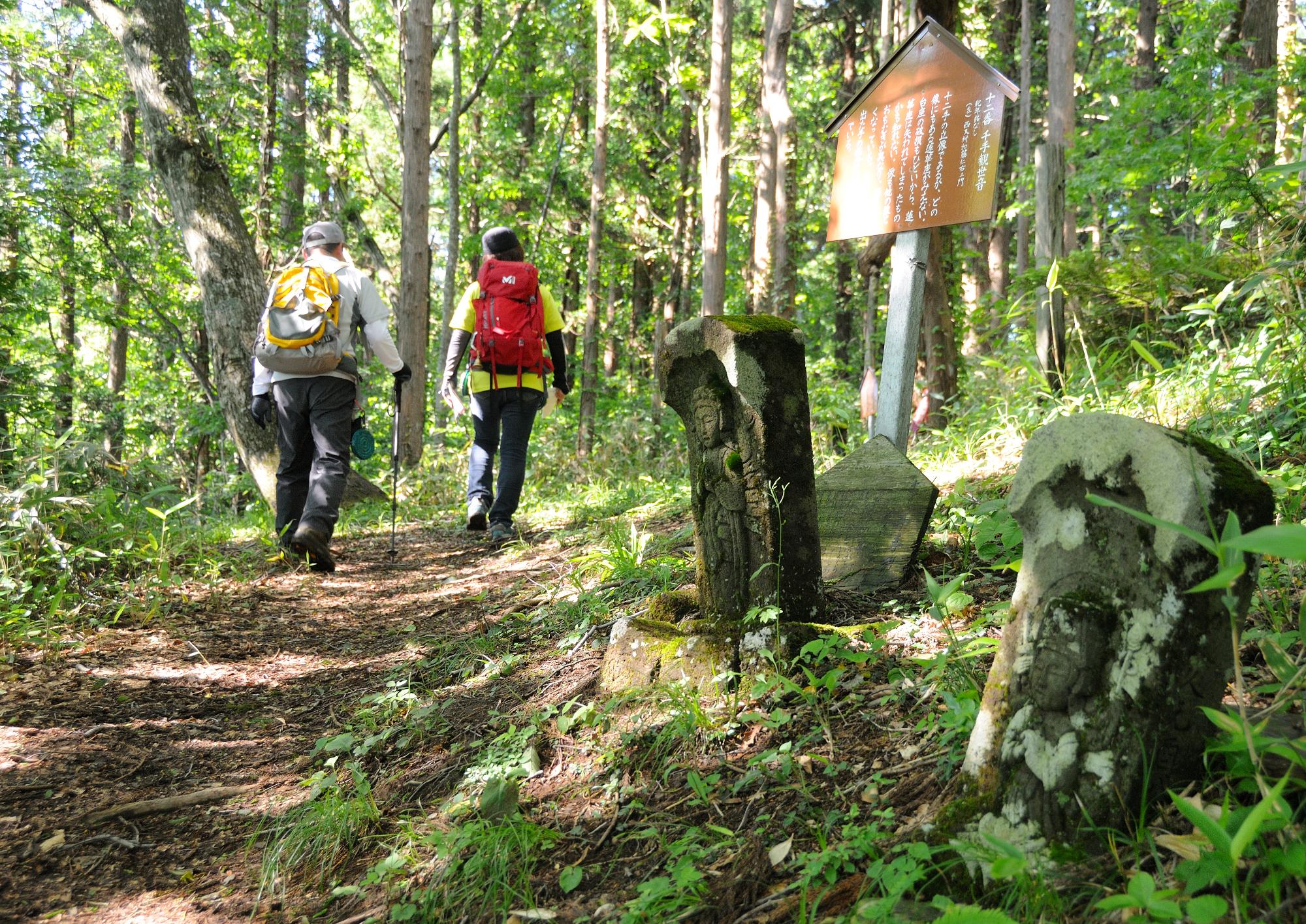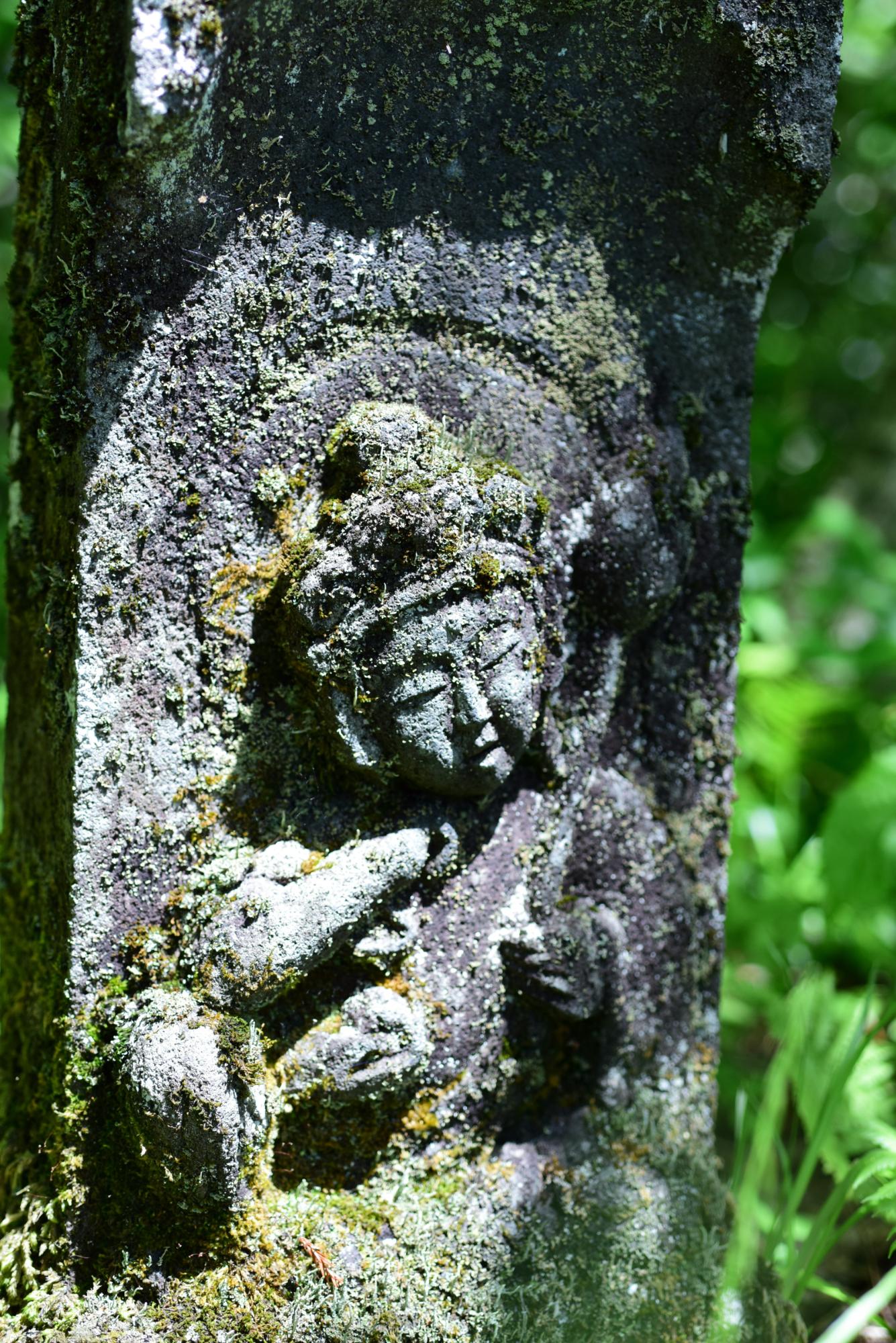Commentary Mt. Bōjū
Mt. Bōjū
For centuries, Mt. Bōjū (409 m) was a site of Buddhist worship and mountain asceticism. Today, this unspoiled woodland is known for its hiking trail lined with 33 statues of Kannon, the bodhisattva of compassion. Mt. Bōjū’s name means “the mountain where monks live,” reflecting the presence of Buddhist monks who once made Mt. Bōjū their home.

The most famous story of the mountain tells the fate of the Nagatsura brothers, who fought Sakanoue no Tamuramaro (758–811), a general later known for subduing the Emishi people to the northeast. Two of the three brothers, who were said to have extraordinarily long faces, died fighting against Tamuramaro’s forces, but the eldest brother escaped to Mt. Bōjū. When Tamuramaro prayed for help in finding the escapee, he heard a thunderous voice from the mountains—the remaining sibling, wailing for the loss of his brothers. The eldest brother’s cries were so loud that they destroyed the mountain’s temple, crushing him beneath it.
The 33 statues of Kannon that punctuate the mountain’s trail were dedicated by local residents in 1860. Kannon is depicted in Buddhist sutras as having 33 forms, and Japan has many routes that connect 33 images or statues of Kannon. It is believed that making offerings at each of the 33 sites along the route will grant a special boon. Some of the best-known examples, such as the Saikoku 33-Kannon Pilgrimage, are hundreds of kilometers long and span multiple prefectures. These routes, often referred to as “pilgrimage routes,” are believed to have first appeared in the Nara period (710–794). Their popularity grew in subsequent centuries, and shorter, more accessible versions of the routes were created that could be completed in just a few hours, or even a few minutes. The 33 statues on Mt. Bōjū are one example of this adaptation.

The Kannon statue route begins near the torii gate that marks the road to Bōjū Shrine. The trail leads up the mountain and along a ridge for approximately 5 kilometers before arriving at the thirty-third Kannon statue, which stands at the site of a former monastic residence. From this point, two paths lead down the far side of the mountain: a 30-minute, 0.8-kilometer route and a 70-minute, 2 kilometer route.
Mt. Bōjū’s terrain is relatively gentle, though the trail is steep in a few places. Suitable clothing and shoes are advised. Hiking the full route takes approximately 4 hours, and most of the path is shaded by trees. Parking is available near Bōjū Shrine, where there is a second trailhead. This is a side trail that climbs the ridge and meets the Kannon statue route near the ninth statue.
この記事に関するお問い合わせ先
秋田県山本郡三種町鵜川字岩谷子8(三種町役場2階)
開庁時間:月曜日~金曜日(午前8時30分~午後5時15分まで)
閉庁日:土曜、日曜、祝日、年末年始(12月29日~1月3日)
電話番号:0185-85-4830
商工観光交流課 観光交流係へのお問い合わせ
- みなさまのご意見をお聞かせください
-







更新日:2023年04月07日